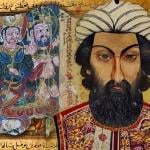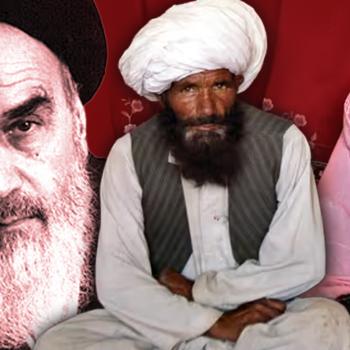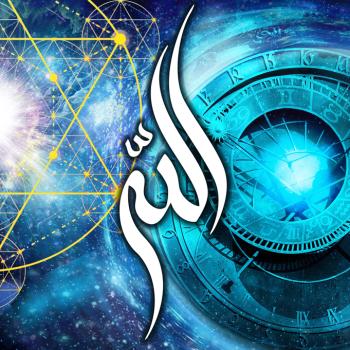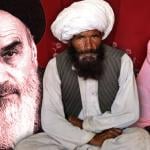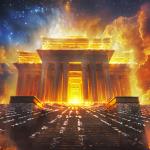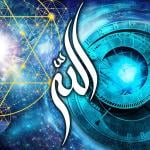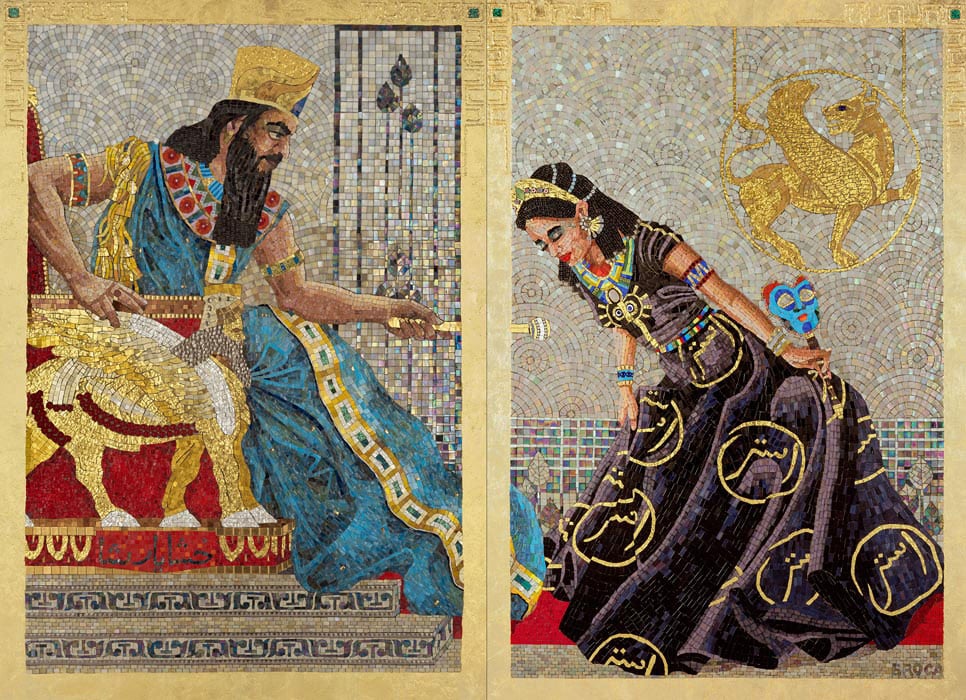
Of all the elements of the holiday Purim, there are two stand-out points that are the least examined popularly. The first is the overlooked plot twist at the end, when in our darkest hour, “many Persians” mityahadim (מתיהדים) – became Jews – and turned the tide against Haman’s genocidal forces (Esther 8:17). Most renderings of the Biblical account say things like “acted like Jews,” but that is not what the word means, it means that they did-Judaism, they quite literally “Jewed” – they “became Jewish” or converted, immigrated, as gerim.
The second surprising, yet often overlooked, aspect of this story is the fact that Hadassah bat Avichayil – more popularly known as Queen Esther – was viewed rabbinically, as being a manifestation of the Ephraimite Messiah, or Mashiach Ben Yosef – in this case Mashiachah bat Yosef.
We read in the Kol Ha’Tor (2:8), an esoteric work describing the process of the future Ge’ulah (Redemption of the Jewish People), according to the vision of the Vilna Gaon (1720 – 1797). The text is said to have been set to pen by Rabbi Hillel Rivlin of Shklov (1757 – 1838). Within this work, it is relayed that “Queen Esther Mashiachah bat Yosef (אסתר המלכה שהיתה משיב״י). Our Sages said (Yerushalmi Talmud Brakhot 1) that the redemption of Yisrael will come about like the first rays of light before the dawn. They were referring to the beginning of the Redemption – hat’chalta d’Geulah (האתחלתא דגאולה) – the mission of Mashiach ben Yosef.”
Indeed, throughout the pages of Tanakh, we find several individuals who have traits and characteristics which are said to parallel that of the expected Messiah. Among these, the more popular ones would be Yitzchaq, Yosef, David, or even figures like Melchizedek – that is, the “Righteous and Just Ruler” Melkhi-Tzedeq Shem ben Noach, Bezalel, and Boaz.
Esther, as a Messianic figure might seem like a stretch to some. Indeed, she is thought to be a Jewish Persian Queen who was reluctant to assume responsibility for her people in the face of danger. But Midrash takes this even further, suggesting that she was literally married to Mordekhai (Bavli Talmud, Megillah 13a), but he encouraged her to save the Jewish people through this fate that had come upon her – a fate that separated her from her husband and put her in the hands – and bed – of the tyrannical Persian King Ahasuerus, Xerxes.
Mordekhai tells Esther that by adapting to this misfortune and using it to the advantage of herself and her people, she could in fact influence the King and stop the impending genocide by Haman and his forces. Yet her integration was not to be assimilationist, nor was it to be done for selfish gain, nor in silence and concealment of her heritage.
As Mordekhai tells her, “Do not imagine that you will escape [in] the House of the King any more so than all the [rest of the] Yehudim! For if you are certainly silent at this time, relief and salvation shall rise for the Yehudim from another place, and the house of your father shall be lost. And who knows if this was not in fact the reason for which you were brought into this Kingdom?” (4:14).
The Ephraimite Messiah in Every Age
In Kabbalah, particularly Lurianic teachings, Mashiach Ben Yosef is any manifestation of the Messianic archetype prior to the advent of Mashiach Ben David. Indeed, Rabbi Yitzchaq Luria (1534 – 1572), the Holy Ari, as well as his talmid Chayim Vital (1543 – 1620), both were claimed to be manifestations of this Ephraimite, “Mashiach Ben Yosef.” Other such figures claimed to have been manifestations of the same were the Ba`al Shem Tov, his great-grandson Rabbi Nachman of Breslov, and many more going back to not only the Biblical accounts, but explicit Talmudic references, as well as those of the Dead Sea Scrolls and Chazon Gavriel tablet.
Following the Mashiach Ben Yosef figure is the more well-known “Kingly” Messiah – Mashiach Ben David. This is the Messiah that we think of in terms of Jewish expectation. This is one who will fulfill the role that “finishes the job” of liberating the Jewish people from our enemies, restoring the Jerusalem Temple, and returning the Lost Tribes of Israel to Yahadut – a word meaning bothy the Jewish People and also meaning Judaism. This latter point, as we will see, ties into the inaugural observation of this message – the aforementioned and overlooked “Plot Twist” of Purim.
Another surprising thing about the Megillah Esther is that Ha’Shem is not mentioned explicitly even one time therein. This of course kept it out of the cache of the Dead Sea Scrolls – as there was no need to retain, nor bury in a genizah any worn out copies of a text without the Holy Name of Ha’Shem within it.
Such an exclusion could not have been happenstance. Ha’Shem is alluded to within it, as a guiding Will of Queen Esther’s destiny, as it were (ibid.). Thus, it was not as though the author just forgot to mention the Creator. Instead, this was a literary devise aimed at showing the degree of assimilation and secularize state of the Persian Jewish community at the time, and even of Queen Esther herself. Yet in spite of this, Esther was counted by the Talmudic Sages as a manifestation of Mashiach – as she saved the Jewish people – much as King Cyrus the Great (539 – 530 BCE) was Biblically called Mashiach as well (Yeshayahu/Isaiah 45:1).
The Talmud, known for presenting an array of openly contradictory arguments, contends that this means Ha’Shem was complaining to the Primordial Mashiach of Cyrus only allowing Jews to return to Jerusalem (Megillah 12a). This is certainly a creative interpretive way to deal with the strange passage. But at the same time, just prior to this reference, Yeshayahu states regarding Cyrus that “he is my shepherd and will accomplish all that I please” (44:28). As well, it was by his order that the Jewish Temple was rebuilt (Divrei Ha’Yamim Bet/2 Chronicles 36:22–23; Ezra 1:2). Today, this would certainly seem to fit the criteria to classify someone as Mashiach – if they liberated the Jewish people and rebuilt the Temple in Jerusalem.
Based on the events described in Josephus’s account of Antiquities of the Jews (11.1.2), one might imagine that a very interesting midrash could be told on Daniel 10:1 and 6:28, where the Prophet and Nazirite Daniel brought Cyrus to knowledge of his destiny with the Jewish people. Perhaps this involved informing him of some particular Abrahamic ancestry. Indeed, in Ethiopian and `Isawiyah Jewish traditions, Cyrus is regarded as a descendant of Judah, through Peretz – a forefather of King David (Ruth 4:18-22). As such, Mashiach is sometimes called Ben Partzi. For these communities, Peretz and Persia are connected etymologically and historically.
The Abrahamic Promise
One of the most well-known accounts of the Biblical account of Genesis, Sefer Ha’Berashit of the Torah, is the blessing and promise to Abraham regarding his progeny (22:16-7). We commonly associate these descendants with our own lineages, whether we are Jewish or Arab, but the reality is that the Biblical account makes an even broader claim.
The Torah promise to Abraham foretold his seed being as numerous as the stars of the sky – literally, that would be 10 to the 22nd power (1e+22) or 10000000000000000000000 – one hundred Quintillion!
Note, however, that Tehillim, Psalms says that Ha’Shem “counts the number of the stars and calls them all by name” (147:4). With that said, there are clearly only several billion humans on the planet at this time – no where near that amount, nor could the planet Earth sustain such numbers. The promise was thus obviously, figuratively referencing the fact that the actual number would be so vast that it could not possibly be accurately calculated.
Indeed, based on the statistical modeling from the time of Abraham – whether one believes such a person to be historical or an allegorical reference to a group of people such as the Hyksos as a whole – the fact is that after this many millennia, such a person or group could easily have disseminated their line throughout all the nations of the world. Indeed, we see in this same promise that through Abraham and his progeny all nations would be blessed. Does this mean, as Christianity maintains, that such a blessing would be poured upon humanity spiritually? Or was this reference to the number of Abraham’s progeny actually saying that all nations would in fact eventually have some degree of lineal descent from him?
As strange as it may sound, the latter seems to be the case. If there was such a figure, his descendants would be innumerable, and would easily overlap with any non-isolated population which came into contact with the lines emanating from him.
Population geneticists have looked at migration patterns, inbreeding coefficients, and family size. They have calculated that it is likely that the most recent common ancestor of the entire human race was alive approximately 2300 to 3000 years ago.[1] Thus, the farther back in history you go from there, the more people become common ancestors.
To explain it another way, the reader should understand simply that an individual’s ancestors double each generation. Common ancestors necessarily appear on multiple ancestral lines after a few hundred years. Every person alive today has many millions of ancestors that were on Earth when the patriarchs of the Tribes of Israel were born.
This was at a time when the global population is estimated at only 50 million or so. The number of descendants of a reproductively successful ancestor will just keep growing. One or two individuals migrating to a new continent and having children will eventually cause that entire continent’s population to be connected to all of the migrating individual’s past ancestors.
The Torah is certainly primarily interested, and focused upon the Children of Israel – there can be no question regarding that. Yet, it notes Twelve Ishma`elite princes (25:12-26). The Ithna Ashari claim notwithstanding in Twelver Shi`ite Islam today, these historical princes as patriarchs of their own tribes, are named Biblically. Certainly, on a spiritual level, the Shi`i claim can state whatever it wishes, but in terms of the literary reference in the Torah, this is speaking of historical Ishma`elite patriarchs.
On top of that, we see the children of Keturah. The Talmud claims this was Hagar upon her teshuvah and return to Abraham – whereupon she adopted a new name. It is accordingly written Talmudical, that the convert, the immigrant, the ger (note the play on words here: Ha’Ger – the Convert) – is like one “born again” – Ger she-nit’gayer k’katan sh’nolad damei (Talmud Bavli, Yevamot 62a; 97a; Rambam, Mishneh Torah, “Issurei Biah” 14:11)
In addition to all of these offspring, from Yitzchaq alone we have Ya`qov and Esau. While we account for the line of Ya`qov by the name spiritually bestowed upon him – Yisrael, he who grapples with the Divine – Esau is another line that is rarely thought of as “Abrahamic.”
Indeed, within the context of the Black Hebrew Israelite new religious movements (note: this is typically a polite academic way of saying “cult”), Esau is the prototypical European. Indeed, both Esau and Edom are used interchangeably in such a manner within this array of new religious movements. Ironically enough, while much of the ideas within these groups are heterodox in the extreme, such references actually derive from normative Rabbinic Judaism, which utilized Esau as a reference to Christianity – particularly European Christianity – since its inception.
But Esau himself was from the same Abrahamic line, and for those groups fixated on referencing “Semitic” as some sort of ethnic identity (which it is not, and never has been – it is a language group), this would make Esau just as “Semitic” as the Children of Israel.
It is statistically very likely that literally billions alive today are literally descendants of Abraham, through various lines of descent. Add to this the further complication of the perhaps semi-legendary “Lost Tribes of Israel.”
The Lost Tribes of Israel and the “Plot Twist” of the Purim Story as “Prophecy”
The first century historian of the common era, Josephus, stated that “the entire body of the people of Israel remained in that country [Media]; wherefore there are but two tribes [Yehudah, “Judah” and Benyamin] in Asia and Europe subject to the Romans, while the ten tribes are beyond Euphrates till now, and are an immense multitude, and not to be estimated by numbers”.[2]
The scientific literature on population modeling demonstrates clearly that ancestors from 2500 to 3000 years ago, that is, from the time of the reign of King David to the captivity of the Northern Israelite tribes, can have descendants that span large populations of entire continents today. [3]
There is a recorded dispute between two great sages in the Mishnah as to whether the ten tribes are going to come back: Rabbi Akiva says, “The ten tribes will not return, as the verse says (Devarim/Deuteronomy 29:27), ‘And Ha’Shem uprooted them from upon their land, with fury, anger and great wrath, and [Ha’Shem] cast them to another land – as it is this day.’”
The sages are in agreement that this verse refers to the future exile of the ten tribes. They disagree as to the exact meaning of the verse.
Rabbi Akiva continues that “just as a day passes and it will never return, so too, they will be exiled never to return.”
But Rabbi Eliezer dissents, arguing that “Just like a day is followed by darkness, and the light later returns, so too, although it will become ‘dark’ for the ten tribes, Ha’Shem will ultimately take them out of their darkness” (Bavli Talmud Sanhedrin 110b.).
The Talmud then goes on to cite a third opinion, as it so often does. Rabbi Shim`on ben Yehudah, of the town of Akko, says in the name of Rabbi Shim`on: “If their deeds are as this day’s, they will not return; otherwise they shall” (ibid. Yerushalmi Talmud, Sanhedrin 10:5.).
This means that if their deeds remain as they were “this day,” the day of their exile, then they will not return. If they repent, and make teshuvah, however, then they will return to the fold. The term teshuvah, of course, refers both to repentance from wrong-doing, but also return to one’s Jewish heritage.
The prophet Amos says the eyes of Ha’Shem are on the “sinful kingdom,” of the Northern Tribes which became “lost” from Assyrian diaspora. “I will remove them from the face of the Land [of Israel]; yet I will not utterly destroy the House of Ya`qov,’ says Ha’Shem. ‘For surely I will command, and will sift the House of Yisrael among all nations, as grain is sifted in a sieve; yet not the smallest grain shall fall to the ground’” (Amos 9:8-9).
Thus, we see here a foreshadowing of the Messianic expectation that these Lost Israelite Tribes will return to `Am Yisrael, with the advent of Mashiach Ben David. Indeed, along with defeating the enemies of the Jewish people in some enduring fashion, and rebuilding the Temple, this is one of the few actual requirements of the Jewish Messiah.
Amos also reveals the vast dissemination of the Lost Tribes – that these would not merely be isolated pockets of Israelite culture preserved miraculously throughout the millennia. Instead, these would be lines completely disbursed throughout ever single nation. Thus, the job of Mashiach Ben David, amongst other aforementioned things, is to call out that lost “seed” of Israel from all the nations of the Earth, to make teshuvah, rediscover their lost Israelite roots as the B’nei Yosef Igbo – “Heebo” people of Nigeria have been doing. Just as in the Megillah Esther, this would amount to a major “plot twist.”
Today, instead of a small number of Haman’s genocidal gangs, we face a threat from literarily billions of antisemites. Today, the threats we, the Jewish people, face emanate from Islamicate Replacement Theology. It is from this doctrinal root that Caliphate-commissioned apocalyptic Hadith narrations were fabricated, related to diabolical and “antichrist” Jews. All of this comes pre-packaged with millenarian expectations of the rise of the “Mahdi” and return of “`Isa” to fight the “Dajjal.”
A quick Google search on these terms will reveal many Muslim websites claim that the “antichrist” is called “Mashiach” whereas the “real Messiah” is called “All-Masih.” Of course, this explanation is pure ignorance. The term Masih is merely the Arabic cognate with the Hebrew Mashiach. The Muslim world, however, seems no more aware of this than the fact that “Mahdi” is from the same linguistic root as the Arabic term for Jews – Yahud – or that the `Isawiyah Jewish community was, as Israel Friedlander documented over a century ago, the first to employ this title for the diaspora Moreh Tzedeq Righteous Teacher of the age.[4]
Perhaps the “Plot Twist” as we stand at the cusp of the Yamot Ha’Mashiach, is that Mashiach’s work will be to vastly expand the number of Jews, by helping return these descendants of the Lost Tribes to their Jewish Israelite roots, through teshuvah. Today there are literally billions who believe that there will soon come a time when the trees of the Levant cry out “O Muslim! There is a JEW hiding behind me!” At that time, the Hadith literature claims, the imagined mujahid will then come and slaughter every last one of us. There are billions of people who believe these genocidal ahadith today – ahadith which are the furthest thing from what the Historical Muhammad taught, but which nevertheless were commissioned by the Caliphate to be penned centuries later.
Perhaps the “Mashiach Work” of opening the eyes of these lost Israelites to their heritage will also be the very work which numerically turns the tide against our avowed enemies?
Perhaps then, Purim is more than a story of our past, but a story of our cyclic reality and the current threats we face, which we eagerly await liberation from by Mashiach?
Certainly, time alone will tell. May Ha’Shem hasten our liberation in the Yamot Ha’Mashiach!
Endnotes:
[1] Douglas L. T. Rohde, Steve Olson, and Joseph T. Chang, “Modelling the Recent Common Ancestry of All Living Humans,” Nature 431, no. 7008 (Sept. 2004): 562–66; Joseph Lachance, “Inbreeding, Pedigree Size, and the Most Recent Common Ancestor of Humanity,” Journal of Theoretical Biology 261, no. 2 (Nov. 2009): 238–47.
[2] Antiquities of the Jews, 11.5.2, Complete Works of Flavius Josephus, combined translations of William Whiston, 1867, and the Standard Edition, 1960
[3] Gideon S. Bradburd, Peter L. Ralph, and Graham M. Coop, “Disentangling the Effects of Geographic and Ecological Isolation on Genetic Differentiation,” Evolution: International Journal of Organic Evolution 67, no. 11 (Nov. 2013): 3258–73.
[4] See Israel Friedlander’s magisterial three-part work “Shiitic Elements in Jewish Sectarianism” in Jewish-Arabic Studies.



